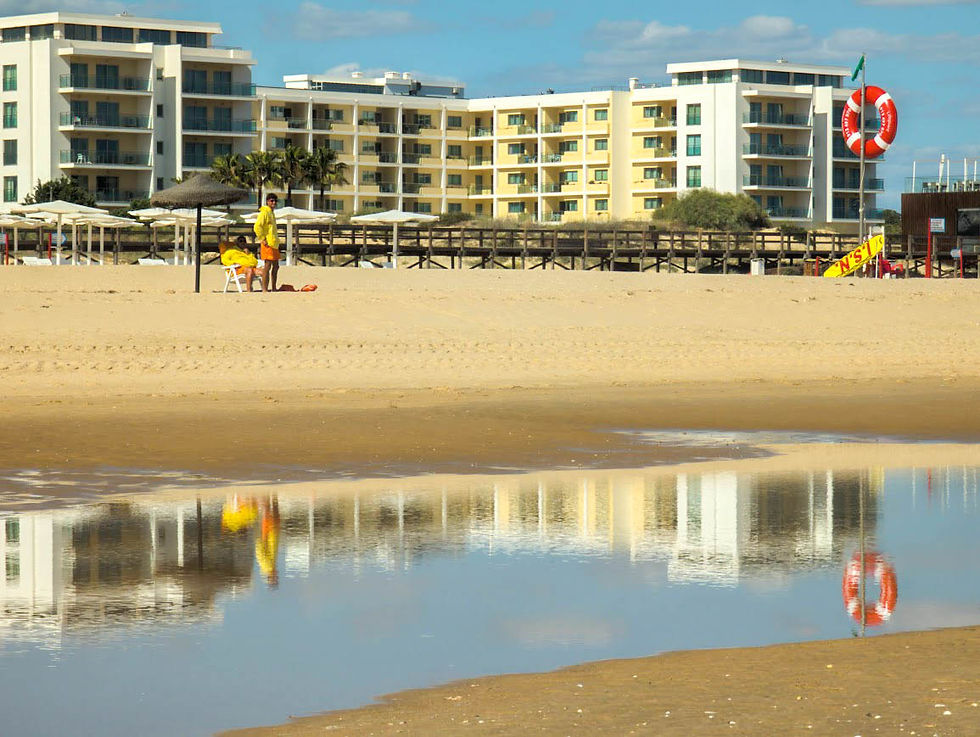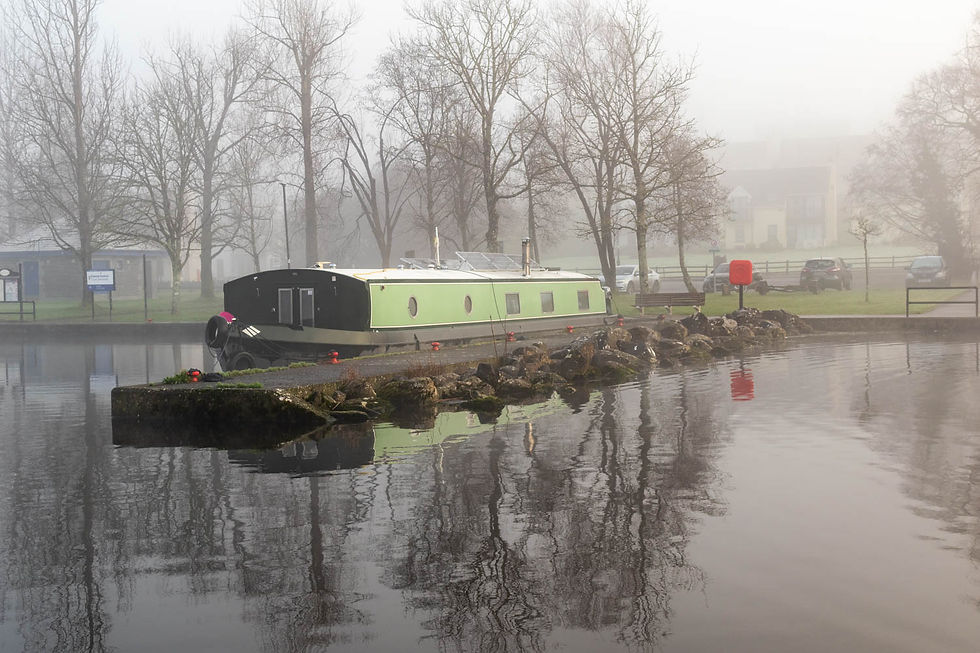Here’s Why I Love Doing Photography Near Water
- WildWillowWays

- Aug 19, 2024
- 5 min read
“For whatever we lose (like a you or a me) It’s always our self we find in the sea.” — e.e.cummings

I love the sea.
I have always found that walking by the sea is a way to attain a sense of serenity and perspective. Listening to the crashing sound of waves as they break, followed by their gentle lap onto the shore, is a form of mental therapy that I have come to appreciate.
Being by the sea gives me a chance to breathe more deeply, to momentarily let go of worries and to get a sense that all is well in this moment.
I’ve always been drawn to water. As a child, my favourite place-to-be was at a small river near my home, paddling my way through the water or sitting by the bubbling stream enjoying the peace and quiet. As an adult, when I am attempting to process an issue in my mind, trying to make an important decision, trying to deal with problems or difficulties, or when I just want some ‘me time’, I still find myself heading for the nearest source of water for inspiration. Strolling along a bank or walkway by a flowing river, sitting by a lakeside or walking along by the coast watching the ebb and flow of the tide are always my go-to places.
It comes as no surprise to me that my photography has led me to many different places where water can feature in my images, whether as main subject or background. I am lucky to live in a country which is surrounded by a fabulous and varied coastal landscape and which also has an abundance of inland waterways to explore and photograph.
Water in landscape photography
A look at the work of most landscape photographers will reveal a substantial number of water-related photographs. The most obvious reason for this is that a body of water in a photograph has the potential to add beauty to the scene in a way that is hard to beat and water can also enhance the beauty of the other elements around it. A sea, lake, river or waterfall will often act as a focal point in an image or as an interesting element in our composition and all of these water subjects can be captured from numerous different angles and perspectives or using a range of different camera settings, adding to the variety of possible images that can be produced.
For close-up photos of coastal vegetation, the sea can provide a stunning backdrop.
It can be the middle layer of a composition where there is foreground interest and sky above.
Water can provide great reflection images and is good for long exposure photography. Without question, a sunrise or sunset over the sea or lake brings an added dimension to that scene.

For close-up photos of coastal vegetation, the sea can provide a stunning backdrop
Coastal photography
Whether it is interesting rock formations, sea grasses blowing in the wind, the colours thrown up by the intermingling of sand and sea, or a nearby cliff face, there is always something interesting for the photographer near the coast. Bringing your camera to a coastal area gives countless opportunities to experiment with composition and interpretation of a scene.

A beach with just sand and sea can be boring and end up being just half sea and half sand so we have to find some interesting feature on which to centre our image, or try an unusual perspective.
The sea itself with its fascinating wave formations might provide our subject, and our images will benefit from the inclusion of rocks, seaweed on the shore, or the effect of the sun on the whole scene.
As well as the bigger landscape, the coast also offers smaller opportunities for interesting shots, such as sea shells on the beach, footprints in the sand or small coastal flowers growing among the rocks. This jellyfish drew my attention on a recent visit to the coast:


Other elements that can provide interest for our photos are:
Boats – I love abandoned boats, or photographing parts of boats
Piers
Fences
Vegetation
Seaweed
People
Fishing objects
Buildings – lighthouses are a favourite and we can get some interesting angles for shots





As well as trying to find interesting features in your coastal landscapes you can vary the position from which you shoot in order to get a different perspective. Instead of shooting straight ahead you can get down low or shoot down from a high vantage point.

Often, we shoot directly out to sea, but we can get interesting perspectives by looking up or looking down the coastline. Sometimes when I am walking along the coastline or climbing a cliff I am looking ahead for potential images, but it is always a good idea to turn around and see what is behind me. Often you will find a completely different scene with another set of possibilities just behind you.

Foreground can become a main element.



At the coast you will already have your background elements – sea and sky – so for variation you could concentrate on the foreground. If you make the foreground look interesting it has the potential to change a snapshot into a photograph.

Many photographs taken straight on from a standing position will be good snapshots...

But varying our perspective or composition can ensure that we produce more interesting photographs.
Seascape photography
I consider seascape photography to be different to coastal photography. A quick Google search gave me this definition of seascape photography:
Seascape photography is a kind of landscape photography where one of the main subjects is the sea or the ocean. The main difference is the ever-moving water, which influences your picture and your settings. https://expertphotography.com
I haven’t yet tried standing in the water to photograph waves or being so close that I have to consider what the tide is doing, but it sounds like an exciting form of photography and one that I definitely intend to try out at some stage. If seascape photography is something that interests you, this short video gives 5 tips you might like to think about before you begin.

Inspirational water photography
In many areas of life water plays a leading role as a source of inspiration and many ‘daily reflection’ or meditation type apps regularly feature images of sunsets over the sea, silky waterfalls, a gurgling stream or gently lapping waves. In fact, most water scenes evoke a mood of reflection and contemplation.









‘Life around water’ as photography subject
As well as water offering itself as a subject for my photographs, I find that animal and plant life on or close to water, the effect of weather conditions or light playing on water, and signs of human activity around water also provide good photographic opportunities.









Creating emotion through water images
Water can evoke emotion in a photograph. The lack of colour on a wide expanse of water can create a feeling of loneliness. A person looking out to sea suggests contemplation. Water images can tell a story of strength, of power, of resistance; they can suggest infinity in time – the water will still be flowing long after we humans have passed on.



Water can sometimes serve as a good background to a main subject and can help evoke a mood or emotion in this way.
Capturing reflections
Water makes a great vehicle for capturing reflections, whether from a calm lake on a clear day, a puddle after the rain or to enhance the lights of a city reflected in a river at night.






“If there is magic on this planet, it is contained in water.” - Loren Eiseley
Further reading
For a comprehensive and knowledgeable guide to seascape photography, with tips on
becoming a better seascape photographer, check out this post:
Updated August 2024






Hi nice reading your bllog